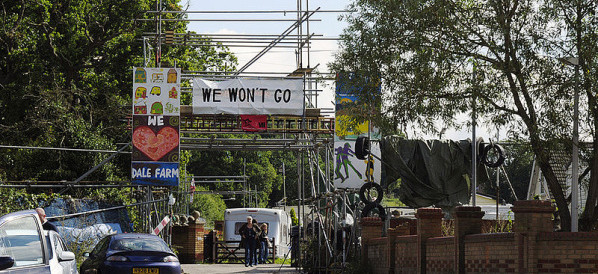 20 Terms
20 TermsHome > Terms > English (EN) > vanilla
vanilla
Dictionaries describe the term "plain-vanilla" as something "simple, plain or ordinary. " Few statements could be further from the truth — for there is definitely nothing ordinary about the seductively aromatic vanilla bean. This long, thin pod is the fruit of a luminous celadon-colored orchid (vanilla planifolia), which, of over 20,000 orchid varieties, is the only one that bears anything edible. Native to tropical America, the vanilla bean was cultivated and processed by the Aztecs, who used it to flavor their cocoa-based drink, xocolatl, later transliterated to chocolatl. That basic flavoring wisdom is still true today . . . vanilla deliciously heightens chocolate's flavor. The vanilla bean was once considered an aphrodisiac, and was so rare that it was reserved for royalty. Because of the extremely labor-intensive, time-consuming process by which it's obtained, pure vanilla is still relatively expensive today. The saga begins with the orchid blossoms, which open only one day a year (and then only for a few hours). Because this particular orchid has only one natural pollinator (the Melipona bee), which cannot possibly handle the task in such a small period of time, the flower must be hand-pollinated — otherwise, no vanilla bean. After pollination, pods take 6 weeks to reach full size (6 to 10 inches long), and 8 to 9 months after that to mature. The mature pods, which must be hand-picked, are green and have none of the familiar vanilla flavor or fragrance. For that they need curing, a 3- to 6-month process that begins with a 20-second boiling-water bath followed by sun heating. Once the beans are hot, they're wrapped in blankets and allowed to sweat. Over a period of months of drying in the sun by day and sweating in blankets at night, the beans ferment, shrinking by 400 percent and turning their characteristic dark brown. The better grades of beans become thinly coated with a white, powdery coating called vanillin (which is also produced synthetically). Today, the three most common types of vanilla beans are Bourbon-Madagascar, Mexican and Tahitian. Bourbon-Madagascar vanilla beans come from Madagascar, off the southeast coast of Africa, and its neighbor 420 miles away — the West Indian island of Réunion. They're rich and sweet and the thinnest of the three types of beans. About 75 percent of the world's vanilla-bean supply comes from the Madagascar area. The thick Mexican vanilla beans come from environs surrounding Veracruz. They have a smooth, rich flavor but are scarcer than the Bourbon-Madacascar beans because most areas where the orchid once thrived are now dedicated to oil fields and orange groves. Additionally, some Mexican vanilla products — though considerably cheaper than their U. S. supermarket counterparts — are suspect because they contain coumarin (banned by the FDA), a potentially toxic substance that can cause liver and kidney damage. Unfortunately, there's no way for the consumer to tell which Mexican vanilla products contain this toxin so the best safeguard is to buy Mexican vanilla beans from a reliable source. Tahitian vanilla beans are the thickest and the darkest (a blackish brown) of the three types. It's intensely aromatic, though not as flavorful as the other two types of beans. Vanilla powder is the whole, dried bean ground until powdery. Its flavor doesn't evaporate when heated as readily as that of vanilla extract, which makes it better suited for baked goods, custards, etc. Vanilla powder is available in specialty cake decorating supply shops, some gourmet markets and through mail order. Vanilla extract is the most common form of vanilla used today. It's made by macerating chopped beans in an alcohol-water solution in order to extract the flavor; the mixture is then aged for several months. To meet FDA standards, pure vanilla extract must contain 13. 35 ounces of vanilla beans per gallon during extraction and 35 percent alcohol. The resulting brown liquid is clear and richly fragrant. (There are double- and triple-strength vanilla extracts, as well as a vanilla essence — so strong that only a drop or two is needed — available through special suppliers by mail order. ) You can count on products labeled "natural vanilla flavor" containing only pure vanilla extract. Imitation vanilla is composed entirely of artificial flavorings (most of which are paper-industry by-products treated with chemicals). It often has a harsh quality that leaves a bitter aftertaste. Pure vanilla extract is about twice as expensive as its imitation counterpart, but there's no real comparison in flavor intensity and quality, and only about half the amount is needed. Vanilla descriptions on labels can be confusing. Natural vanillin is a substance intrinsic to the vanilla bean, whereas artificial vanillin is made from wood-pulp by-products. Vanilla flavoring describes a blend of pure and imitation vanilla. In the United States, a label that reads vanilla ice cream may only be made with pure vanilla extract and/or vanilla beans, whereas vanilla-flavored ice cream may contain up to 42 percent artificial flavorings and artificial-flavored ice cream contains only imitation flavorings. Vanilla extracts are readily available and vanilla beans can be found in supermarkets and most specialty food stores. Most commercial vanilla beans are Bourbon-Madagascar; Tahitian and Mexican beans (as well as better grades of Bourbon-Madagascar) are more readily available through mail order. Extracts can be stored indefinitely if sealed airtight and kept in a cool, dark place. Vanilla beans should be wrapped tightly in plastic wrap, placed in an airtight jar and refrigerated. They can be stored in this manner for about 6 months. In order for its flavor not to dissipate, vanilla extract should be added to cooked mixtures after they've been briefly cooled. To use vanilla beans, slit them lengthwise down the center and scrape out the thousands of diminutive seeds. These seeds can be added directly to foods such as ice-cream mixtures, shortening to be used for pastry dough, sauces, etc. Homemade vanilla extract can be made by placing a split bean in a jar containing 3/4 cup vodka, sealing and letting it stand for 6 months. Vanilla beans may also be used to make deliciously fragrant vanilla sugar. Whole beans that have been used to flavor sauces or other mixtures may be rinsed, dried and stored for reuse. Vanilla adds flavor magic to a multitude of sweet and some savory dishes.
- Part of Speech: noun
- Synonym(s):
- Blossary:
- Industry/Domain: Culinary arts
- Category: Cooking
- Company: Barrons Educational Series
- Product:
- Acronym-Abbreviation:
Other Languages:
Member comments
Terms in the News
Billy Morgan
Sports; Snowboarding
The British snowboarder Billy Morgan has landed the sport’s first ever 1800 quadruple cork. The rider, who represented Great Britain in the 2014 Winter Olympics in Sochi, was in Livigno, Italy, when he achieved the man-oeuvre. It involves flipping four times, while body also spins with five complete rotations on a sideways or downward-facing axis. The trick ...
Marzieh Afkham
Broadcasting & receiving; News
Marzieh Afkham, who is the country’s first foreign ministry spokeswoman, will head a mission in east Asia, the state news agency reported. It is not clear to which country she will be posted as her appointment has yet to be announced officially. Afkham will only be the second female ambassador Iran has had. Under the last shah’s rule, Mehrangiz Dolatshahi, a ...
Weekly Packet
Language; Online services; Slang; Internet
Weekly Packet or "Paquete Semanal" as it is known in Cuba is a term used by Cubans to describe the information that is gathered from the internet outside of Cuba and saved onto hard drives to be transported into Cuba itself. Weekly Packets are then sold to Cuban's without internet access, allowing them to obtain information just days - and sometimes hours - after it ...
Asian Infrastructure Investment Bank (AIIB)
Banking; Investment banking
The Asian Infrastructure Investment Bank (AIIB) is an international financial institution established to address the need in Asia for infrastructure development. According to the Asian Development Bank, Asia needs $800 billion each year for roads, ports, power plants or other infrastructure projects before 2020. Originally proposed by China in 2013, a signing ...
Spartan
Online services; Internet
Spartan is the codename given to the new Microsoft Windows 10 browser that will replace Microsoft Windows Internet Explorer. The new browser will be built from the ground up and disregard any code from the IE platform. It has a new rendering engine that is built to be compatible with how the web is written today. The name Spartan is named after the ...
Featured Terms
Dale Farm
Site for the largest Irish Traveller community in the UK, Dale Farm houses around 100 families and over 1,000 people. Falling within a local ...
Contributor
Featured blossaries
Browers Terms By Category
- Poker(470)
- Chess(315)
- Bingo(205)
- Consoles(165)
- Computer games(126)
- Gaming accessories(9)
Games(1301) Terms
- General Finance(7677)
- Funds(1299)
- Commodity exchange(874)
- Private equity(515)
- Accountancy(421)
- Real estate investment(192)
Financial services(11765) Terms
- Lingerie(48)
- Underwear(32)
- Skirts & dresses(30)
- Coats & jackets(25)
- Trousers & shorts(22)
- Shirts(17)
Apparel(222) Terms
- Investment banking(1768)
- Personal banking(1136)
- General banking(390)
- Mergers & acquisitions(316)
- Mortgage(171)
- Initial public offering(137)
Banking(4013) Terms
- Legal documentation(5)
- Technical publications(1)
- Marketing documentation(1)




